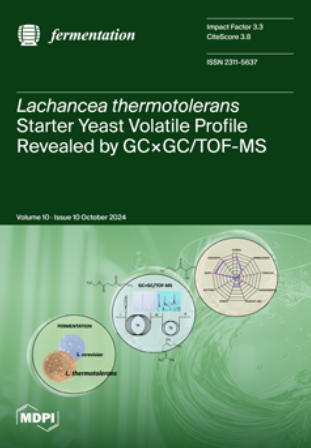Reduced Sodium in White Brined Cheese Production: Artificial Neural Network Modeling for the Prediction of Specific Properties of Brine and Cheese during Storage
IF 3.3
3区 农林科学
Q2 BIOTECHNOLOGY & APPLIED MICROBIOLOGY
引用次数: 0
Abstract
Background: White brined cheese is one of the most frequently consumed cheeses that is accepted among a large group of consumers, which is largely related to its unique sensory properties, which are characterized by specific technological processes including ripening in the brine. Thus, white brined cheese contains a high amount of NaCl, and frequent consumption might lead to excessive sodium intake, which nowadays, presents a global problem. Consequently, food industries have developed reduced sodium products by substitutional salts. Furthermore, various studies have indicated that increased sodium intake via the diet can be associated with cardiovascular diseases, a risk of digestive system cancer, obesity, and other conditions. Calcium salts (citrate and lactate) are safe for human health and can be added to various foods according to the quantum satis rule. The present study aimed to partially replace NaCl with Ca-citrate and Ca-lactate in proportions of 25% and 50%. Additionally, the study presents the possibility of applying Artificial Neural Network (ANN) models for the prediction of some brine and cheese properties. Methods: White brined cheese with substitutional salts in brine (25% and 50% Ca-citrate and 25% and 50% Ca-lactate) were produced and compared to the control cheese ripened in conventionally applied NaCl brine. The acidity, total dissolved solids, salt amount, conductivity, color, and textural and sensory properties were determined over the 28 days of cold storage. Results: The substitution of NaCl with Ca-citrate and Ca-lactate is promising for sodium reduction in white brined cheese, whereby the physical and chemical properties remain acceptable. The best sensory score gain occurred with a substitution of 25% NaCl with Ca-citrate. Furthermore, ANN models can be employed to predict brine and cheese properties during storage.白卤干酪生产中的还原钠:用于预测卤水和干酪在储存过程中特性的人工神经网络模型
背景:白腌奶酪是一大类消费者最常食用的奶酪之一,这在很大程度上与其独特的感官特性有关,其特点是特定的工艺过程,包括在盐水中成熟。因此,白腌奶酪含有大量的NaCl,频繁食用可能导致钠摄入过多,这在当今已成为一个全球性问题。因此,食品工业已经通过取代盐开发出还原钠产品。此外,各种研究表明,通过饮食增加钠摄入量可能与心血管疾病、消化系统癌症风险、肥胖和其他疾病有关。钙盐(柠檬酸盐和乳酸盐)对人体健康是安全的,可以根据量子饱和定律添加到各种食物中。本研究旨在用柠檬酸钙和乳酸钙以25%和50%的比例部分取代NaCl。此外,该研究还提出了应用人工神经网络(ANN)模型预测某些盐水和奶酪特性的可能性。方法:用盐水中的替代盐(25%和50%柠檬酸钙和25%和50%乳酸钙)生产白卤干酪,并与在常规NaCl盐水中成熟的对照干酪进行比较。在冷藏28天内测定酸度、总溶解固体、盐量、电导率、颜色、质地和感官特性。结果:用柠檬酸钙和乳酸钙代替氯化钠有可能降低白腌奶酪中的钠含量,从而使其物理和化学性质保持可接受的水平。用柠檬酸钙代替25%的NaCl可获得最佳的感官评分。此外,人工神经网络模型可用于预测储存过程中的盐水和奶酪特性。
本文章由计算机程序翻译,如有差异,请以英文原文为准。
求助全文
约1分钟内获得全文
求助全文
来源期刊

Fermentation-Basel
BIOTECHNOLOGY & APPLIED MICROBIOLOGY-
CiteScore
3.80
自引率
18.90%
发文量
594
审稿时长
7 weeks
期刊介绍:
Fermentation-Basel is an international open access journal published by MDPI, focusing on fermentation-related research, including new and emerging products, processes and technologies, such as biopharmaceuticals and biotech drugs. The journal enjoys a good reputation in the academic community and provides a high-impact forum for researchers in the field of bioengineering and applied microbiology.
 求助内容:
求助内容: 应助结果提醒方式:
应助结果提醒方式:


